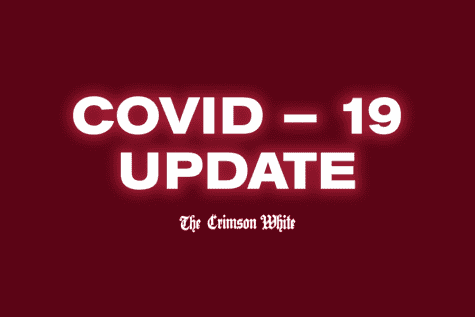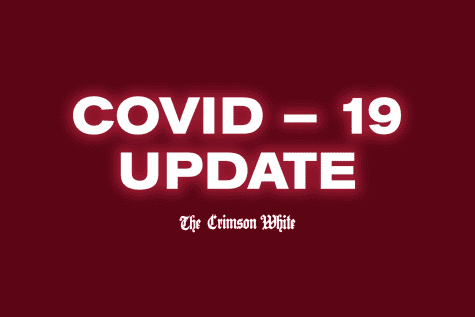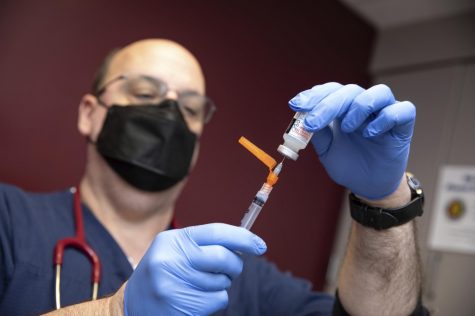UA System releases health and safety plan for fall return
June 11, 2020
The University of Alabama System has released a 22-page document outlining a proposed health and safety plan to reopen for the fall semester amid the COVID-19 pandemic.
The Comprehensive Health and Safety Plan for the UA System includes the University of Alabama in Tuscaloosa, the University of Alabama Birmingham and the University of Alabama Huntsville.
A System-wide task force developed the plan with guidance from scientists, doctors, researchers and numerous higher education experts on UA campuses.
The plan, which was approved by the UA Board of Trustees, provides an overview of phased returns at the three campuses and includes details on health protocols.
The document includes plans and recommendations for testing all individuals returning to campus, requiring masks in situations where physical distance cannot be maintained.
Returning students will be tested for COVID-19 before or immediately after returning to campus.
According to the document, 2.5% of students, faculty and staff may be selected for random COVID-19 tests to “find trends, identify outbreaks and monitor the prevalence of COVID-19 on each campus,” but the testing would be voluntary for most students.
The academic calendar could be amended to allow for longer breaks.
Limiting in-semester holidays and breaks as well as ending in-person instruction by Thanksgiving are being considered to limit the chance of students bringing the virus back to campus after returning home.
The new Stay Safe Together app will allow users to complete health checks.
Healthcheck allows users to report COVID-19 related symptoms and exposure. The frequency of required reporting “will be determined by public health and medical guidance relevant to each campus community,” according to the document.
The plan recommends requiring people to complete the Healthcheck self-assessment on the app before attending any events with ten or more people. The app will also be able to alert users if they have been in close contact with someone who tested positive in the previous 14 days. Participation in the exposure notification system will be voluntary.
In situations where social distancing cannot be achieved, all students, faculty and staff will be required to wear masks.
This includes classrooms, labs, communal office spaces and gatherings “where social distancing is difficult to maintain.” The use of assigned seating and strategically spaced seating plans is encouraged.
The University will be required to purchase and distribute personal protective equipment (PPE), and faculty and staff will be provided with two reusable masks. PPE will be made available for students to purchase “if available” with no mark-up cost.
Athletic events must comply with CDC, Alabama Department of Public Health, NCAA and conference guidelines.
The document says that campuses are developing “multiple models for the admission of event spectators at various density levels.” Campuses may consider implementing “a symptom assessment in connection with event ticketing, distributed seating, and mandatory face coverings for spectator attendance.”
Athletes and staff will be screened daily in the early phases of a campus plan. Athletes will also be screened before participating in any games, and randomized testing among athletes may be required for continued participation.
Move-in dates for on-campus dorms will be extended to prevent congestion.
The requirement for freshmen to live on campus may be suspended for in-state students for the 2020-2021 academic year. UA System campuses will also have to designate a “space for isolation/quarantine, including protocols for providing support (academics, food, other necessary items), and active monitoring.” Dorms should designate a separate floor or hall for isolation of COVID-19 positive tests.
Asymptomatic individuals who have been exposed to someone with COVID-19 may remain in their on-campus residence if the room has no common areas (including bathrooms). Off-campus accommodations, such as hotels or contract apartments, should be considered if no suitable on-campus housing is available to house positive cases.
Greek life will likely have to make significant changes as well. “Modified plans for recruitment should consider innovative ways to conduct events previously held in person,” the document reads. “Chapters must work with Student Housing to develop and implement guidelines for move-in and living in chapter houses, meals, as well as practices for cleaning and disinfecting.”
Recreational facilities will limit capacities to cut down on congestion.
All equipment should undergo enhanced cleaning and hard-to-clean equipment should be removed. Campuses “should remove items in common areas, such as break rooms and lobbies, that can be touched by multiple people,” the document reads. “Students, faculty, and staff are responsible for cleaning/sanitizing personal workspace. Sanitizing wipes or disinfectant should be made available to promote the cleaning of individual spaces.”
The full report is available on the UA System website.
Details for the UA campus return plan will be released in the next few days, according to an email from the University. The UA plan, which is governed by the UA System’s plan, paves the way for the Tuscaloosa campus to resume operations through “a careful and measured reopening this fall.”









